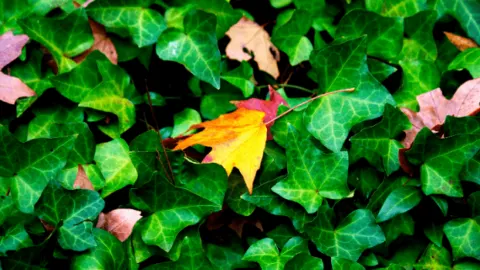If you want to read an English Ivy care guide, this is for you. I will explain all relevant care aspects in detail in this article. This is an indoor guide for English Ivy.
English Ivy Care Takeaways
To care for English Ivy provide well-draining soil with a pH range of 6.0-7.8. Water every 5-10 days and use bright indirect light for optimal growth. The plant prefers a temperature range of 50-70°F (10-21.1°C) and humidity levels between 40-60%. Fertilize monthly.
| Species | Hedera helix |
|---|---|
| Synonyms | English ivy, Common ivy, Atlantic ivy, European ivy |
| Family | Araliaceae |
| Genus | Hedera |
| Growth | Trailing vine |
| Height | 80.0ft / 24.4m |
| Width | 3.0ft / 0.9m |
| Soil | Prefers well-draining soil with a pH range of 6.0-7.8. |
| Watering | Every 5-10 days |
| Light | Bright indirect light. |
| Temperature | 50.0 – 70.0°F / 10.0 – 21.1°C |
| Humidity | 40.0 – 60.0% |
| Fertilizer | Once a month |
| Propogation | Stem cuttings or layering |
| Toxicity | Toxic to humans and animals such as cats and dogs. Contains saponins |
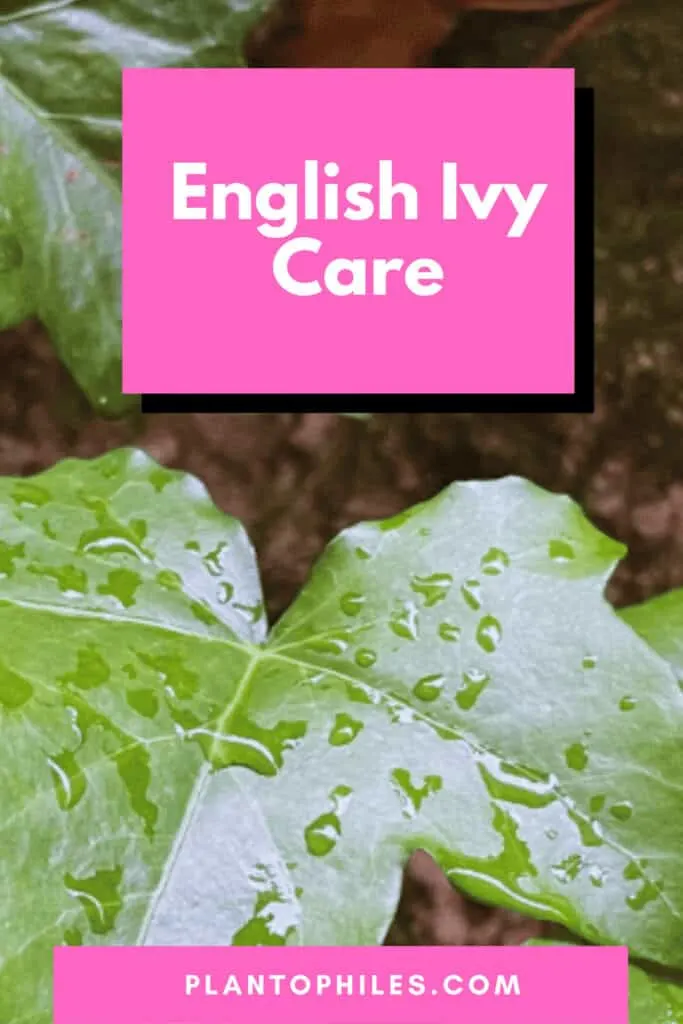
The English Ivy Plant
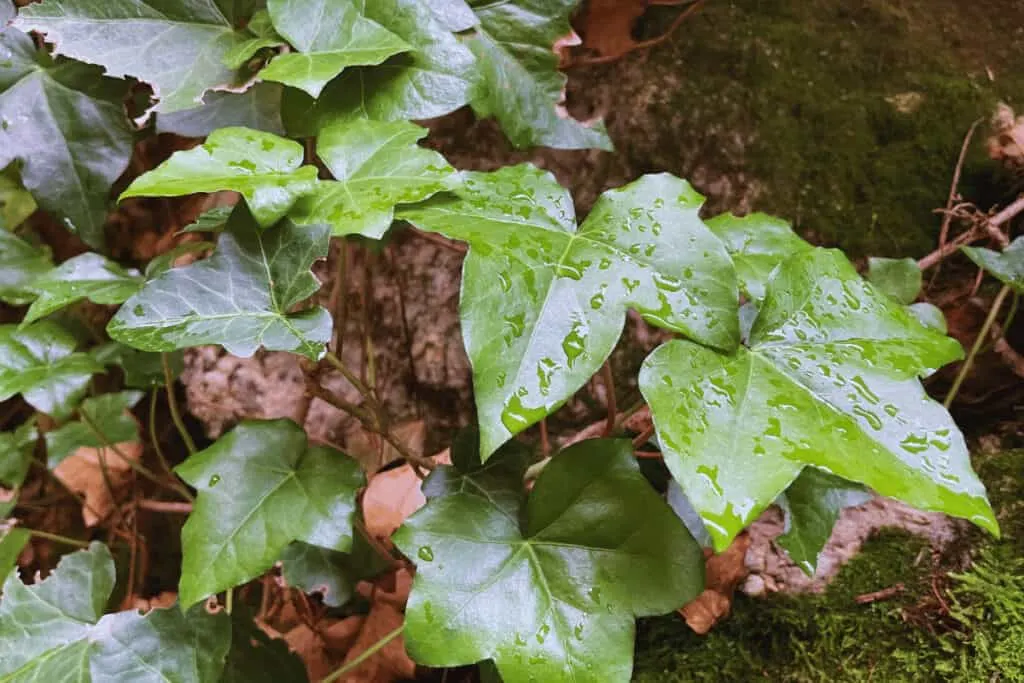
English Ivy (Latin name Hedera helix) is a highly popular and recognizable houseplant. It is a flowering plant in the family of Araliaceae.
While English Ivy is certainly appreciated as a houseplant, many outdoor gardening enthusiasts dislike this evergreen climbing vine for its invasive nature.
Table of Contents
English Ivy Plant Care Basics
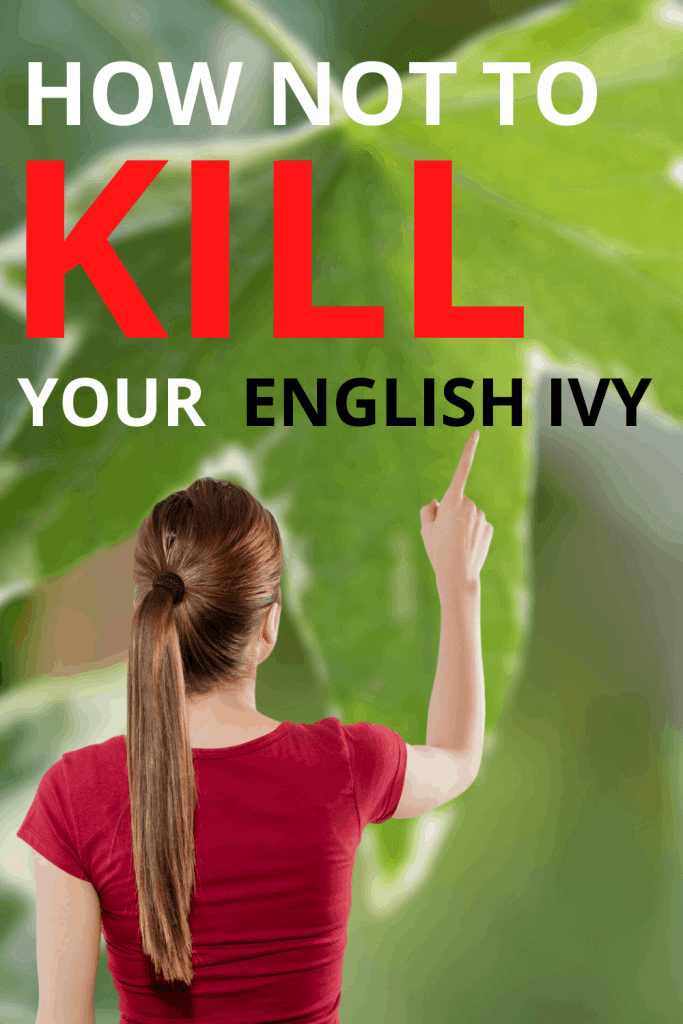
Soil
Hedera helix grows in well-draining regular potting soil. The soil pH should be between 6 and 8.
If you are looking for a good soil mix for houseplants, look at my soil mix guide.
Light
Some plants thrive well when blessed with the same amount of sunlight throughout the year. As far as the English ivy is concerned, during the growing season (spring and summer), it would help if you kept it in a spot that grants your plant moderate light.
In fall and winter, bright, indirect sunlight is what your Hedera helix craves.
If you are new to the hobby of collecting and growing houseplants, my article on light levels might come in handy at this point.
If you are struggling to provide your plant with an adequate amount of sunlight, be it because your apartment does not offer your plant optimal conditions as far as sunlight goes or maybe just because you only have a few (small) windows, you could also very well use grow lights to grow your Hedera Helix.
The English Ivy grows just as well under fluorescent light as regular sunlight.
If you are going for fluorescent light, a good light meter is recommended, as it will help determine how much light is necessary/provided. The unit for measuring light for growing plants is a “foot candle.“
Watering
During the growing season, water your Hedera helix thoroughly. Between waterings, let the top layer of the soil dry out (not completely, but almost).
A bulletproof method to ensure your plant gets the right amount of water is to stick your finger inside the soil (about an inch deep) and see if it is dry there. Bless your English ivy with a little drink if it is dry.
Also, make sure your pot has a drainage hole. The English ivy does not like wet feet. A drainage hole will help prevent this from happening.
Fertilizer
Feed your plant about once a month with a balanced liquid fertilizer in spring and summer. Use full-strength fertilizer.
In winter, fertilizing your Hedera helix won’t be necessary. Also, when repotting your Hedera helix, fertilizing won’t become necessary until the second year of cultivation.
If you are not very familiar with the topic of fertilizing plants, please take a gander at our fertilizing guide.
Temperature
The English ivy likes it rather cool. During the day, aim for temperatures between 11 to 22 degrees (52 to 71 Fahrenheit). During the night, Hedera helix prefers colder temperatures.
Humidity
The English ivy likes a lot of humidity but also does fine in average room humidity.
Regular misting of the plant is encouraged, as it increases the humidity and makes spider mite infestations (the biggest threat to the English ivy in terms of plant pests) less likely.
(Re)Potting
Repotting of your English ivy is best done in spring. When repotting, look for a pot about an inch taller than the actual pot.
If the pot is a little bit bigger, it’s still not a big problem, as the English ivy is a hardy plant known to be a vigorous grower.
Repotting the plant every 1-2 years is usually sufficient.
Repotting becomes necessary when the plant has outgrown its pot (when the roots have filled the pot).
Propagation
Propagation of the Hedera helix is an easy task. The easiest way to propagate Hedera helix is through stem tip cuttings. For a detailed guide on propagating the Hedera helix, see below.
Pruning your English Ivy
You might be forced to prune your English Ivy at some point. After all, we are dealing with a very aggressive creeping vine here.
Pruning the Hedera helix is an easy task and can be done any time of the year.
So, to make sure your creeping plant keeps in good shape & form, it is a good idea to trim it once or twice a year at least.
With the help of sharp scissors, cut off unhealthy vines.
If your Hedera helix does not get well-distributed sunlight, you might find that certain parts of the plant develop much better than others.
If that should be the case, cut off the deficient parts and move your plant to a location where the whole plant gets blessed with the same amount of sunlight.
Pruning your Hedera helix can also be done for aesthetic purposes, as it will encourage more bushy plant growth.
English Ivy Winter Dormancy
A winter rest for the English is recommended when grown as a houseplant. Ideally, your plant will be able to rest from November until February.
The ideal location for your Hedera helix to enjoy this period of dormancy will be a cool room that is not too dark. The average temperature in that room should be around 45- 52 degrees Fahrenheit (9 to 11 degrees Celsius).
During the dormancy period, reduce watering to an absolute minimum and don’t fertilize it.
English Ivy Problems
The English ivy is a rather hardy plant that is pretty forgiving when neglected or cared for all too much.
Still, a few things can go wrong with your creeping vine. Here are some of the problems:
Drooping Leaves
If your plant has a lot of drooping leaves, this might be due to overwatering. To solve the problem, simply water less (frequently).
Spider Mites on Hedera Helix
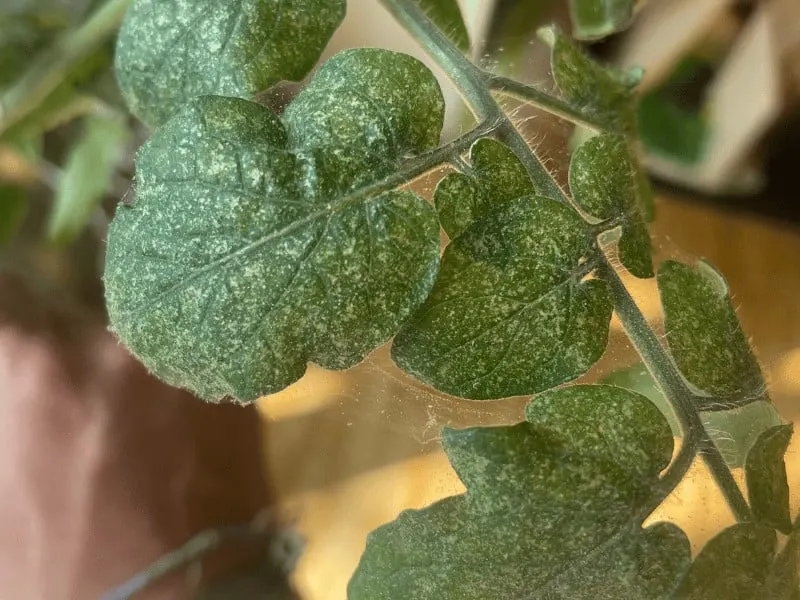
Another problem you might have to deal with as a plant parent of Hedera helix is spider mites. Unfortunately, these pesky plant pests are common guests on English Ivys.
To prevent a spider mites infestation in the first place, regular misting of the plant can help, as spider mites thrive in warm, dry climates.
If you were not all that lucky and are already dealing with these pests, here’s what you can do to get rid of them:
- Isolate your English ivy from other plants (you don’t want these creepy arachnids on your other houseplants!)
- Trim any highly infected areas that can’t be saved anymore (get rid of those trimmings immediately if you can!)
- Wash your plant with insecticidal soap or mild dish detergent (wash your plant once or twice a week for about a month)
Brown leaf tips
Brown leaf tips are another common problem with English Ivy plants and many other houseplants.
If your Hedera helix features numerous leaves with brown leaf tips, this could be due to either too warm or too dry air. Please remember that the English ivy likes colder temperatures. Also, don’t forget to regularly mist the plant to benefit from a humidity boost here and there.
Variegation loss
If you do have a variegated Hedera helix (multi-colored, not just green leaves) and its leaves are losing coloration, then the problem is most likely that your plant is not getting enough sunlight. Variegated houseplants generally need more sunlight than their classic counterparts.
Propagating English Ivy
English Ivy propagation is straightforward.
To propagate the English Ivy through stem tip cuttings, do this:
- Take a 4-inch-long cutting (10 cm) from any mature, healthy stems (your cutting should have at least 2-3 leaves!)
- Make sure to do the cut directly below a leaf node
- Remove the lower leaves of your cutting before proceeding
- Root your cuttings in a glass container with plain water (you can also root your cuttings in damp perlite instead)
- As soon as your cutting forms some roots (roots should be around 2 to 3 cm long), you can put the cuttings in a fresh pot with fresh soil.
Note: When propagating your Hedera helix, you should ensure that the propagation occurs in a bright location. Also, average room temperature is a requirement during the propagation time.
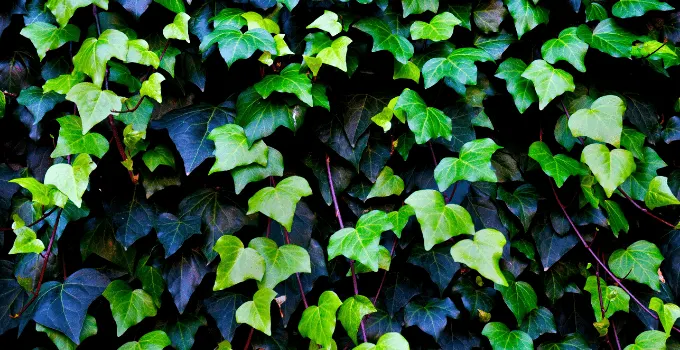
6 Key Care Tips For Hedera Helix
1. English Ivy does very well under fluorescent light. If you struggle to provide your plant with the right amount and intensity of sunlight, consider growing your plant under grow lights.
2. Regular misting of the leaves is a good measure to prevent spider mites infestations of your Hedera Helix.
3. English ivy is very invasive when grown as an outdoor plant. Keep that in mind.
4. English ivy is mildly poisonous. Keep the plant away from both cats & dogs. If you are looking for cat-safe houseplants, look at our article: 18 cat-safe houseplants your kitties will surely enjoy.
5. When pruning the English ivy (or touching the plant on any other occasion), it is recommended that you wear protective gloves, as the English ivy contains toxic substances that can cause dermatitis.
6. Protect your English ivy from draughts and heating vents. The plant does not tolerate this all too well.
FAQ
What are some good display options for Hedera Helix?
Hedera Helix looks great in various settings. The plant works very well in hanging baskets, looks great in pots, and is also an eye-catcher when used as a groundcover in containers that feature an upright plant as the main plant.
Is Hedera Helix poisonous to cats and dogs?
Hedera Helix is poisonous to both cats & dogs. So, make sure to place this plant out of reach of your pets.
Does the English Ivy thrive well outdoors?
Absolutely. Especially in spring and summer, the English Ivy makes for a great outdoor plant. Because of its invasive nature, Hedera Helix must be watched closely outdoors.
What nicknames does Hedera helix have?
Hedera helix is commonly known as “English Ivy,” “European Ivy,” “Common Ivy” or even just “Ivy.”
How old can the English ivy get?
The English Ivy is one of these plants that can get old. English Ivy in outdoor areas sometimes survives for over 2 or 3 centuries!
What’s the best temperature for the English ivy?
While many houseplants thrive in warmer temperatures, English ivy prefers colder temperatures (11 to 20 degrees). It is, therefore, best to put it in a colder room.
How much light does my variegated English ivy need?
English ivy can thrive in various locations with various levels of sunlight. They generally tolerate low and medium light but thrive in bright light (but no direct sunlight!). The general rule of thumb for variegated houseplants is that they need more light than their non-variegated, green friends. Keeping your variegated English ivy in a bright location is best. If the location is not bright enough, the leaves of your variegated Hedera helix will likely turn all green.
Is the English Ivy an invasive plant species?
Yes, the English ivy is aggressive and invasive. When grown as a houseplant, this is not an issue. The plant’s vigorous growth and aggressive nature can become a serious problem when grown outdoors.

Daniel has been a plant enthusiast for over 20 years. He owns hundreds of houseplants and prepares for the chili growing seasons yearly with great anticipation. His favorite plants are plant species in the Araceae family, such as Monstera, Philodendron, and Anthurium. He also loves gardening and is growing hot peppers, tomatoes, and many more vegetables.

